
Is this the makings of a great meal in the great outdoors, or another one of Mr. Sato’s too-crazy-for-his-own-good schemes?
While it’s not as well-known internationally as ramen, soba, or udon, Japan also has a soft spot in its heart for the ultra-thin wheat noodles called somen. Usually eaten cold during the summer months, somen also has the potential to be the most entertaining kind of Japanese noodle to eat if you have it nagashi somen-style, in which diners catch bunches of noodles with their chopsticks as they flow down a stream of water running in a sliced bamboo tube or other long container.
As with many culinary traditions, the exact origins of nagashi somen are unknown, though many scholars believe it first developed on Japan’s southwestern island of Kyushu. But our Japanese-language correspondent Mr. Sato said that he knows the true genesis of nagashi somen.
According to Mr. Sato, nagashi somen owes its existence to Himiko, the mystical monarch who ruled Japan’s ancient Yamataikoku kingdom in the second and third centuries. As part of a ritual to ensure a good harvest for her people, Mr. Sato assures us, Himiko was the first person to eat nagashi somen, and she did so while standing in a river.
For those of you new to RocketNews24, we should probably mention that Mr. Sato isn’t always the most mentally sound individual, and so sometimes it’s best to take his claims with a grain of salt (though preferably not salt made from Mr. Sato’s sweat). Still, he insisted that the real way to eat nagashi somen was while standing in a river. So we boiled a batch of somen, grabbed some bowls and chopsticks, and piled into the RocketMobile for a drive out of Tokyo and into the countryside.
After parking, we made our way to the water’s edge, and Mr. Sato waded into the stream. However, he’d also need someone to flow the noodles down the river to him, so the rest of our reporters who’d accompanied him followed him into the water.
Then it was time for nagashi somen!
▼ You’d be surprised how many of our group meals involve Mr. Sato taking his shirt off.
Mr. Sato proved to be remarkably adept at snatching noodles out of the river, and under his tutelage, the rest of our taste-testers were also able to grab their somen before it floated past them.
▼ Although some of them used a net, just to be on the safe side.
Before taking the first bite, though, Mr. Sato had one more cultural reminder for us. “Don’t think of this as eating somen,” he explained. “What you’re doing is drawing the earth into your body, so that the energy provided by Her Highness Himiko will reach every corner of your cells.”
And with that, it was finally time to try Mr. Sato’s “real nagashi somen”…
…and all those who did dubbed it incredibly delicious!
▼ The face of a satisfied, vindicated palate.
But why did floating the somen down the river boost its flavor? Mr. Sato’s logic is that the river water contains natural minerals which the noodles soak up, an effect you can’t achieve with big-city tap water. After eating a few more mouthfuls, Mr. Sato tilted his eyes to the heavens and shouted his thanks to Himiko, while fellow reporter P.K. Sanjun declared it perhaps the best somen he’d ever had, plus worthy of seven Michelin stars (if the famed French dining guide rated rivers, that is).
Now, before you rush out to the nearest river with a pack of noodles, we should warn you that, in addition to tasty minerals, there are all sorts of other things that could be present in an open body of water, some of which are extremely unpleasant or even dangerous. We’d also like to point out that some of the things Mr. Sato and P.K. have taste-tested for us before may have skewed their scale such that anything that doesn’t have a high probability of killing them gets their thumbs-up, so bear that in mind, and remember that regular, non-river nagashi somen is always an option too.
Standard nagashi somen photo image: Wikipedia/Opponent
All other images ©RocketNews24
[ Read in Japanese ]

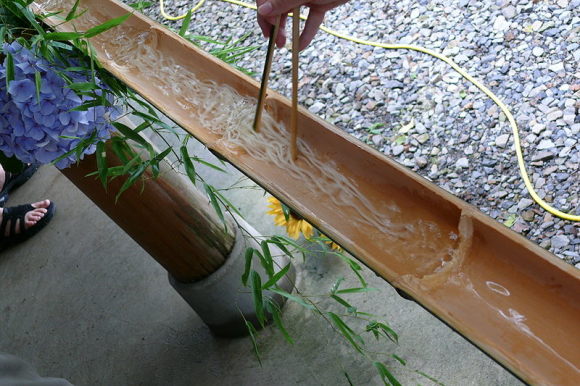
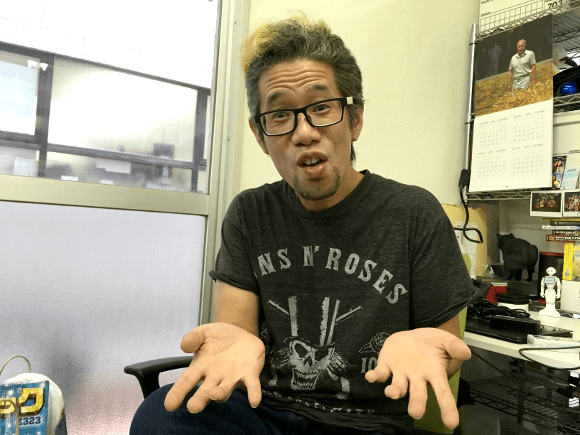

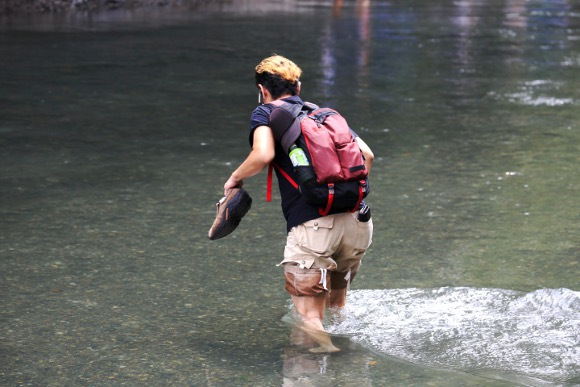
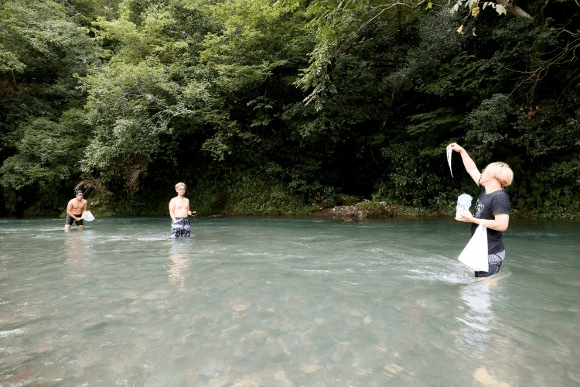
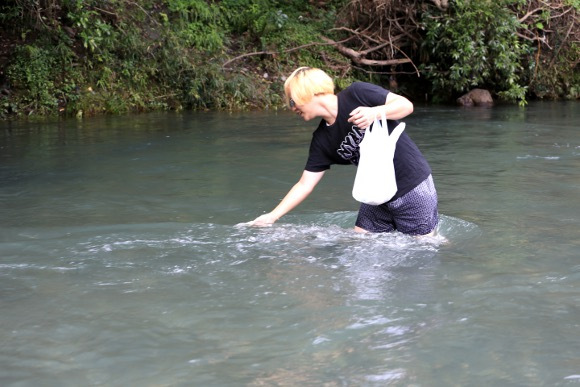
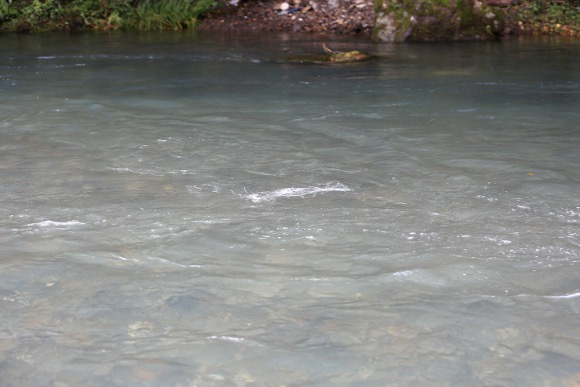
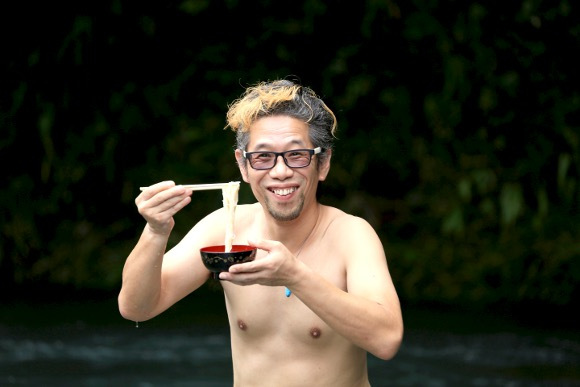
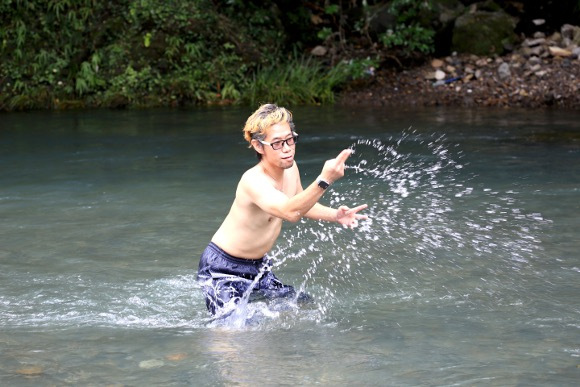
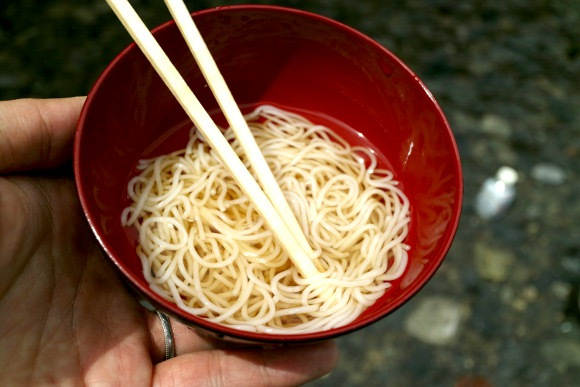
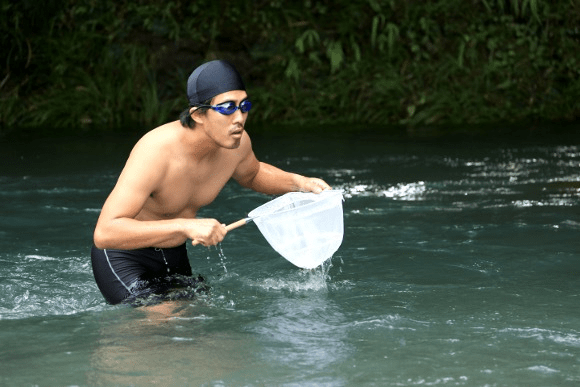

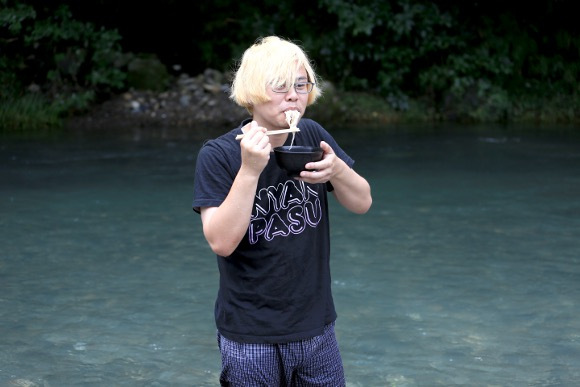
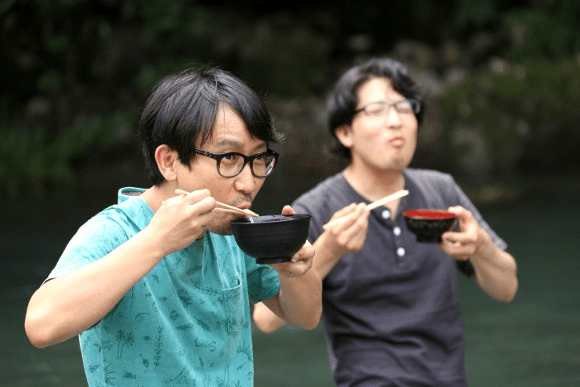
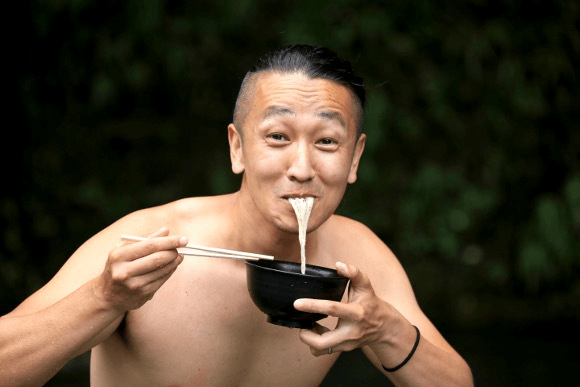
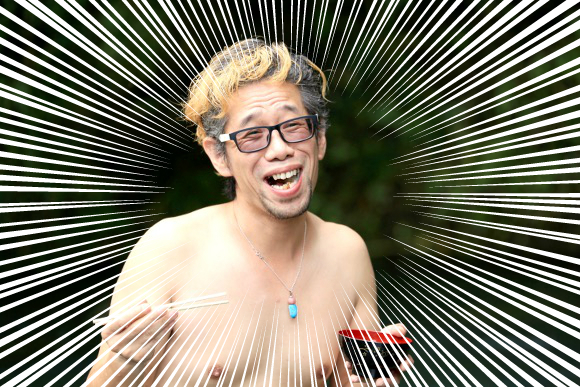
 Event held to watch noodles go down a long water slide, but no noodle eating allowed
Event held to watch noodles go down a long water slide, but no noodle eating allowed Attention nagashi somen-iacs! This new Japanese gadget lets you enjoy flowing noodles solo
Attention nagashi somen-iacs! This new Japanese gadget lets you enjoy flowing noodles solo Our reporter devises the best way to beat the summer heat: by eating somen in an outdoor shower
Our reporter devises the best way to beat the summer heat: by eating somen in an outdoor shower Another at-home noodle meal? Then play with your food with Japan’s Big Stream Somen Slider Custom
Another at-home noodle meal? Then play with your food with Japan’s Big Stream Somen Slider Custom Legendary Pokémon Rayquaza evolves into a nagashi somen noodle delivery system【Pics】
Legendary Pokémon Rayquaza evolves into a nagashi somen noodle delivery system【Pics】 McDonald’s new Happy Meals offer up cute and practical Sanrio lifestyle goods
McDonald’s new Happy Meals offer up cute and practical Sanrio lifestyle goods All-you-can-drink Starbucks and amazing views part of Tokyo’s new 170 meter-high sky lounge
All-you-can-drink Starbucks and amazing views part of Tokyo’s new 170 meter-high sky lounge More foreign tourists than ever before in history visited Japan last month
More foreign tourists than ever before in history visited Japan last month Studio Ghibli glasses cases let anime characters keep an eye on your spectacles
Studio Ghibli glasses cases let anime characters keep an eye on your spectacles Beautiful Sailor Moon manhole cover coasters being given out for free by Tokyo tourist center
Beautiful Sailor Moon manhole cover coasters being given out for free by Tokyo tourist center Hamster abandoned at Tokyo ramen restaurant gets new home
Hamster abandoned at Tokyo ramen restaurant gets new home The oldest tunnel in Japan is believed to be haunted, and strange things happen when we go there
The oldest tunnel in Japan is believed to be haunted, and strange things happen when we go there Arrest proves a common Japanese saying about apologies and police
Arrest proves a common Japanese saying about apologies and police Starbucks reopens at Shibuya Scramble Crossing with new look and design concept
Starbucks reopens at Shibuya Scramble Crossing with new look and design concept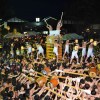 “Half-naked men only in loincloths” drum battle returns to Hida festival for first time in five years
“Half-naked men only in loincloths” drum battle returns to Hida festival for first time in five years Disney princesses get official manga makeovers for Manga Princess Cafe opening in Tokyo
Disney princesses get official manga makeovers for Manga Princess Cafe opening in Tokyo We try out “Chan Ramen”, an underground type of ramen popular in the ramen community
We try out “Chan Ramen”, an underground type of ramen popular in the ramen community Beautiful new Final Fantasy T-shirt collection on the way from Uniqlo【Photos】
Beautiful new Final Fantasy T-shirt collection on the way from Uniqlo【Photos】 Foreign English teachers in Japan pick their favorite Japanese-language phrases【Survey】
Foreign English teachers in Japan pick their favorite Japanese-language phrases【Survey】 Is the new Shinkansen Train Desk ticket worth it?
Is the new Shinkansen Train Desk ticket worth it? There’s a park inside Japan where you can also see Japan inside the park
There’s a park inside Japan where you can also see Japan inside the park Japanese convenience store packs a whole bento into an onigiri rice ball
Japanese convenience store packs a whole bento into an onigiri rice ball Studio Ghibli releases Kiki’s Delivery Service chocolate cake pouches in Japan
Studio Ghibli releases Kiki’s Delivery Service chocolate cake pouches in Japan Japan’s bone-breaking and record-breaking roller coaster is permanently shutting down
Japan’s bone-breaking and record-breaking roller coaster is permanently shutting down New definition of “Japanese whiskey” goes into effect to prevent fakes from fooling overseas buyers
New definition of “Japanese whiskey” goes into effect to prevent fakes from fooling overseas buyers Foreign passenger shoves conductor on one of the last full runs for Japan’s Thunderbird train
Foreign passenger shoves conductor on one of the last full runs for Japan’s Thunderbird train Our Japanese reporter visits Costco in the U.S., finds super American and very Japanese things
Our Japanese reporter visits Costco in the U.S., finds super American and very Japanese things Kyoto bans tourists from geisha alleys in Gion, with fines for those who don’t follow rules
Kyoto bans tourists from geisha alleys in Gion, with fines for those who don’t follow rules Studio Ghibli unveils Mother’s Day gift set that captures the love in My Neighbour Totoro
Studio Ghibli unveils Mother’s Day gift set that captures the love in My Neighbour Totoro Domino’s Japan now sells…pizza ears?
Domino’s Japan now sells…pizza ears? New Japanese KitKat flavour stars Sanrio characters, including Hello Kitty
New Japanese KitKat flavour stars Sanrio characters, including Hello Kitty Sales of Japan’s most convenient train ticket/shopping payment cards suspended indefinitely
Sales of Japan’s most convenient train ticket/shopping payment cards suspended indefinitely Sold-out Studio Ghibli desktop humidifiers are back so Totoro can help you through the dry season
Sold-out Studio Ghibli desktop humidifiers are back so Totoro can help you through the dry season Japanese government to make first change to romanization spelling rules since the 1950s
Japanese government to make first change to romanization spelling rules since the 1950s Ghibli founders Toshio Suzuki and Hayao Miyazaki contribute to Japanese whisky Totoro label design
Ghibli founders Toshio Suzuki and Hayao Miyazaki contribute to Japanese whisky Totoro label design Doraemon found buried at sea as scene from 1993 anime becomes real life【Photos】
Doraemon found buried at sea as scene from 1993 anime becomes real life【Photos】 Tokyo’s most famous Starbucks is closed
Tokyo’s most famous Starbucks is closed One Piece characters’ nationalities revealed, but fans have mixed opinions
One Piece characters’ nationalities revealed, but fans have mixed opinions We asked a Uniqlo employee what four things we should buy and their suggestions didn’t disappoint
We asked a Uniqlo employee what four things we should buy and their suggestions didn’t disappoint Princesses, fruits, and blacksmiths: Study reveals the 30 most unusual family names in Japan
Princesses, fruits, and blacksmiths: Study reveals the 30 most unusual family names in Japan Studio Ghibli’s new desktop Howl’s Moving Castle will take your stationery on an adventure
Studio Ghibli’s new desktop Howl’s Moving Castle will take your stationery on an adventure Traditional noodles undergo a cute evolution in Kawaii Company’s new rainbow somen
Traditional noodles undergo a cute evolution in Kawaii Company’s new rainbow somen To eat or to play? Do both with a somen noodle slider from Japan!
To eat or to play? Do both with a somen noodle slider from Japan! Beat the heat with Japanese somen noodles dipped in Starbucks noodle sauce?!
Beat the heat with Japanese somen noodles dipped in Starbucks noodle sauce?! A whole new way to eat somen noodles: Homemade somen canapés!【SoraKitchen】
A whole new way to eat somen noodles: Homemade somen canapés!【SoraKitchen】 Rare vending machine at Japan’s oldest shrine sells…divine crepes!
Rare vending machine at Japan’s oldest shrine sells…divine crepes! Let’s cook up some noodles measuring 3.6 meters (12 feet) in length!【SoraKitchen】
Let’s cook up some noodles measuring 3.6 meters (12 feet) in length!【SoraKitchen】 Japan super budget dining – What’s the best way to spend 1,000 yen at Family Mart?
Japan super budget dining – What’s the best way to spend 1,000 yen at Family Mart? Stay cool with somen ice Cup Noodles this summer
Stay cool with somen ice Cup Noodles this summer How to eat Japan’s super long noodles【Taste test】
How to eat Japan’s super long noodles【Taste test】 Mr. Sato goes to a Korean-style shaved ice cafe, makes several mistakes, still has a great time
Mr. Sato goes to a Korean-style shaved ice cafe, makes several mistakes, still has a great time Which noodles, other than Okinawa soba, pair best with Okinawa soba broth?【Taste Test】
Which noodles, other than Okinawa soba, pair best with Okinawa soba broth?【Taste Test】 Mr. Sato broadens his home drinking horizons at Kaldi【Japan’s Best Home Senbero】
Mr. Sato broadens his home drinking horizons at Kaldi【Japan’s Best Home Senbero】 Let’s eat our favorite anime characters’ hair, says Tokyo cafe
Let’s eat our favorite anime characters’ hair, says Tokyo cafe Chill out this summer with a refreshing iced Cup Noodle
Chill out this summer with a refreshing iced Cup Noodle Pretty Princess Sato: Our hero gets his makeup done by a pro, brings all the boys to the yard
Pretty Princess Sato: Our hero gets his makeup done by a pro, brings all the boys to the yard
Leave a Reply